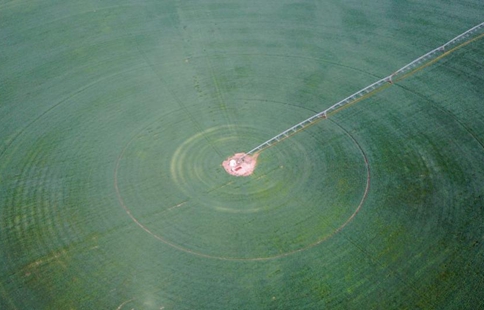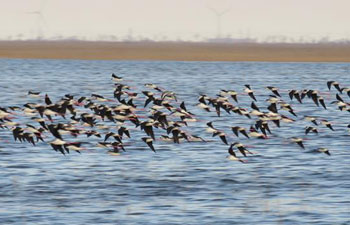LONDON, June 15 (Xinhua) -- A study by experts from the Zoological Society of London (ZSL) into an extinct giant tortoise Thursday raised new questions about how wildlife adapts to climate change and human hunting.
The study focused on the Caribbean island of Hispaniola, divided between the Dominican Republic and Haiti, which was once home to a now-extinct species of giant tortoise that helped shape the landscape seen today, according to the ZSL.
The findings by the London-based international conservation charity published in the journal Zootaxa, highlights the discovery of a previously-undescribed species of giant tortoise (Chelonoidis marcanoi) in the Dominican Republic, which lived during the last 100,000 years.
"The study raises important new questions about how wildlife adapts to the challenges of climate change and human hunting," said a ZSL spokesman.
Fossil evidence of giant tortoises was first recovered from Hispaniola around 35 years ago, and extensive new finds of giant tortoise fossils from the dry forests of south-eastern Hispaniola now suggest the species was originally adapted to open habitats, which were common across the island during the last Ice Age glaciation.
"It is now thought that subsequent climate-driven environmental changes led to the expansion of tropical forests and restricted the tortoise to a small remaining 'refuge' of dry forest, where it would also have been more vulnerable to prehistoric human hunters," added the ZSL spokesman.
Lead author Dr. Samuel Turvey from ZSL's Institute of Zoology, said: "Giant tortoises are more usually associated in the public imagination with the Galapagos Islands, but increasing fossil evidence shows these creatures were once widespread across the northern Caribbean too.
"Our findings from several cave sites in Pedernales Province, which contain the fossilised bones of at least seven individual tortoises, are significant because remains of these large animals are almost completely absent from other geological deposits of similar age elsewhere on Hispaniola.
"This suggests that these dry forests in the south of the island were potentially the final refuge for Hispaniola's giant tortoises, as climate changes at the Pleistocene-Holocene boundary -- around 11,000 years before the present -- replaced their former semi-arid habitats with tropical forests unsuitable for tortoises."
London Zoo is home to four giant Galapagos tortoises, the closest relative to the extinct Caribbean species.
Dirk, aged 80, is the oldest in the small London community of Tortoises. Males weigh an average 260 kilograms and females 136 kilograms, with some growing to a length of around 1.6 meters.

















